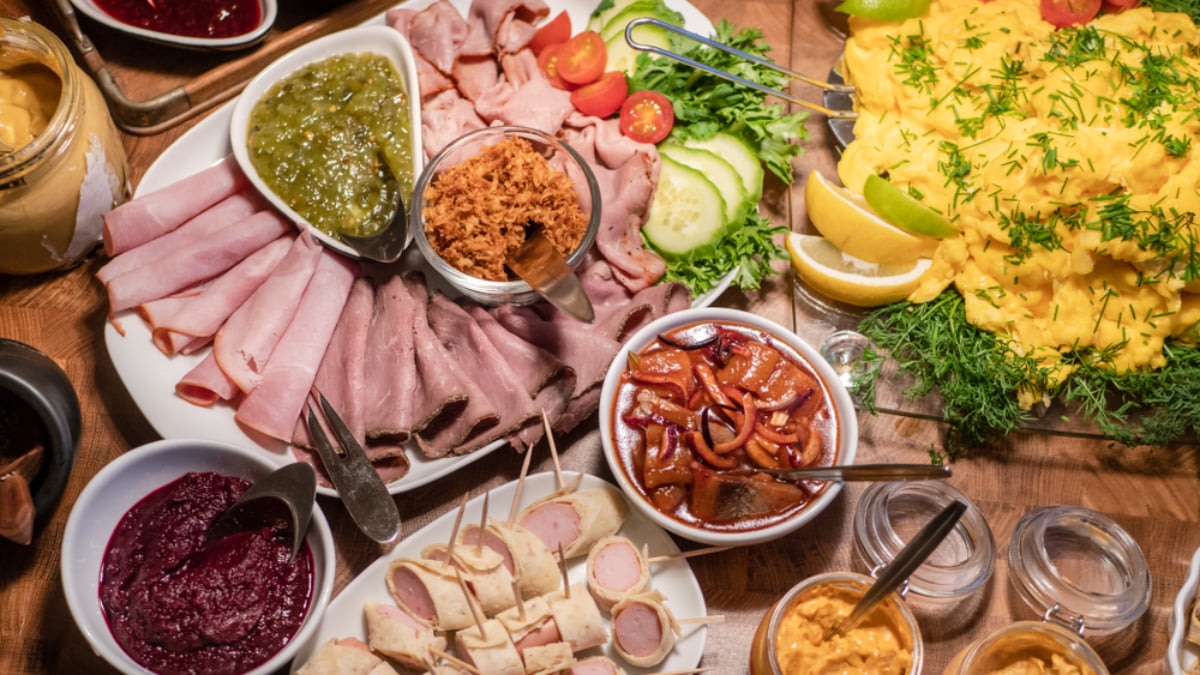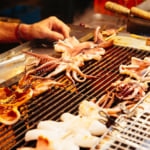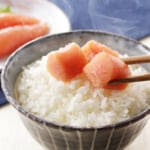Photo by Thor Jorgen Udvang/Shutterstock
The 7 Traditional Swedish Foods You Have to Try When Visiting Sweden
Sweden is a country with long, cold winters, where historically, preserving, curing and smoking food was vital to keeping the larders stocked during the darker months. As a result, traditional Swedish food features a lot of cured fish and salted meat, flavored with the few native fruits, seasonings and herbs available. Today, Swedes are known not just for their love of communal eating (smorgasbord) and tender meatballs, but innovative ways of preserving food to create, healthy, nutrient-dense foods with a long shelf life. These seven traditional Swedish foods are the must-try dishes when visiting Sweden.
table of contents
[x] close
The 7 Traditional Swedish Foods You Have to Try When Visiting Sweden
Gubbrora
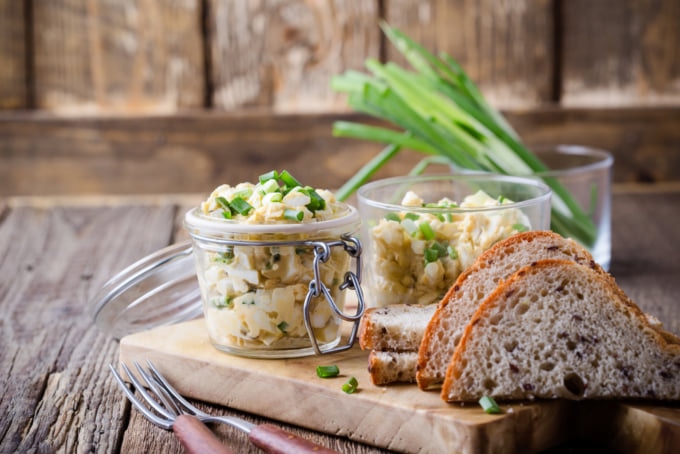
Photo by Istetiana/Shutterstock
Gubbrora is a creamy salad made from salt-cured anchovies, eggs, chives and dill, often with a little caviar added for extra indulgence. The dish is served on bread and is perfect as a snack between meals. Salt-cured meat and fish has been an important component of the Swedish diet for centuries, as people had to come up with ways to preserve food during the colder months when game was scarce.
Lingonberry Jam
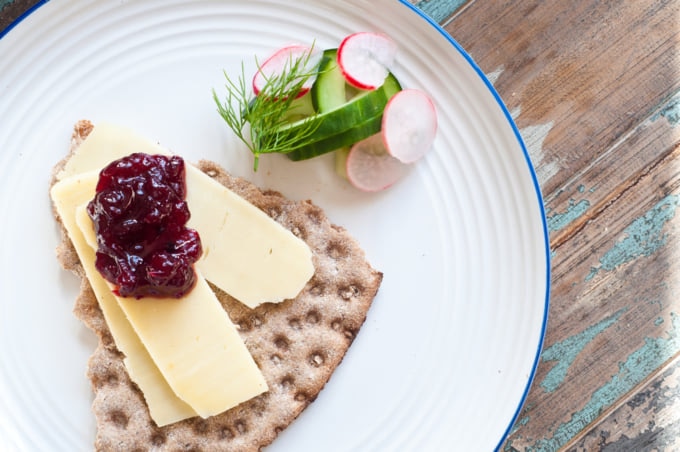
Photo by CatchaSnap/Shutterstock
Also known as mountain cranberries or partridge berries, lingonberries thrive in the forests of Scandinavia. The berries have a long shelf live because of their acidic composition, and were historically a vital source of vitamins and minerals during Sweden's long winters. Lingonberry jam is a little sweet and a little tart, not unlike North American's cranberry sauce. The jam is used to add a fresh, combative flavor to meat, stew or fish dishes, and can also be used as a spread for toast and bread.
Rose Hip Soup
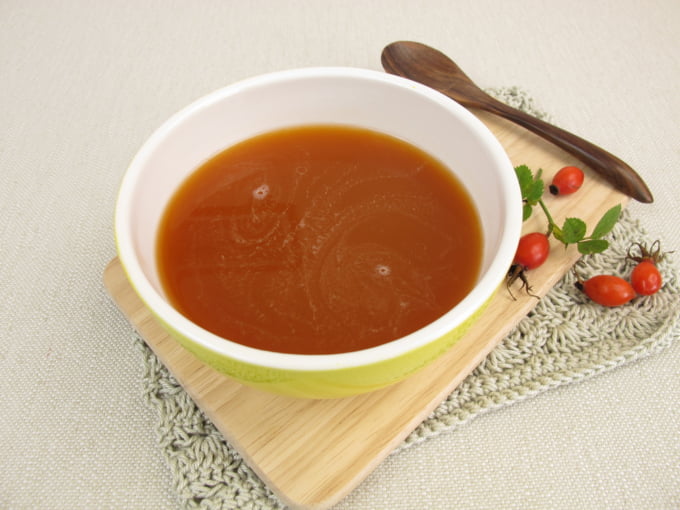
Photo by Heike Rau/Shutterstock
As the name might suggest, rose hip soup is made from rose hips, which are bulbous fruits produced by pollinated rose plants from summer through autumn. Rose hips have a wide variety of uses, and herbal teas containing the fruits are especially common. In Sweden, rose hip soup is a thin, slightly sweet beverage or dessert made from dried rose hips and sugar, and is usually eaten for breakfast or after a meal.
Kottbullar / Swedish Meatballs
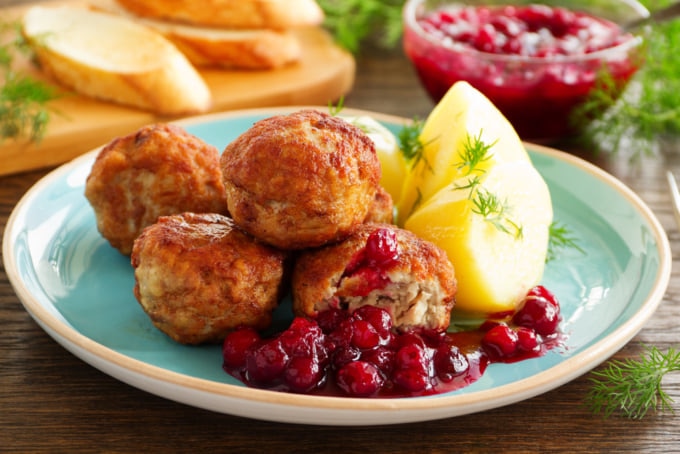
Photo by Lesya Dolyuk/Shutterstock
Internationally, perhaps the country's most famous dish is Swedish meatballs, known simply as kottbullar in Sweden. This type of meatball is known for being soft and tender, a consistency achieved by soaking the breadcrumbs before adding them to the mixture. Another crucial step is blending the ingredients until smooth, as Swedish meatballs aren't known for being chunky and 'rustic'. Swedish meatballs are delicious served with mashed potatoes and lingonberry jam.
Palt / Pitepalt / Kroppkakor

Photo by Johanna K M Nilsson/Shutterstock
Potato dumplings or palt have been popular in Sweden for as long as the potato, and have a range of regional variations. The most widespread are kroppkakor, which are made by forming a potato mash around a meaty mixture and boiling until firm. Another is known as pitepalt which are made with barley and wheat flour, pork and raw potatoes grated finely, which is mixed up, formed into balls and boiled. Typical toppings are butter and lingonberry jam.
Gravlax
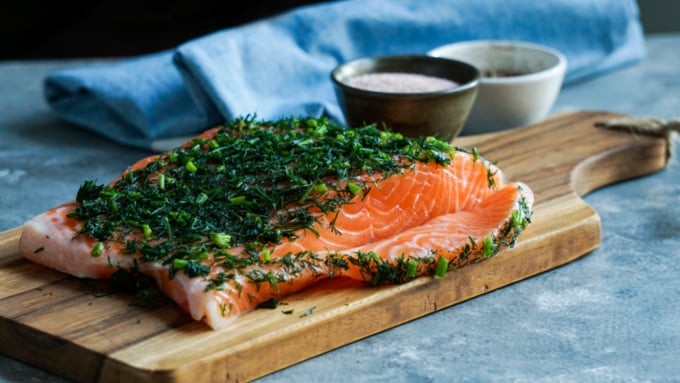
Photo by Julia-Bogdanova/Shutterstock
Gravlax is common in northwestern Europe and Scandinavia, made by curing salmon with salt, sugar and dill. Historically, the dish was fermented to extend shelf life, but this step is no longer necessary in modern recipes. Gravlax is an appetizer or side dish typically served with gravlax sauce, a savory mixture of mustard, sugar, red wine, neutral oil, salt, pepper and fresh dill.
Artsoppa
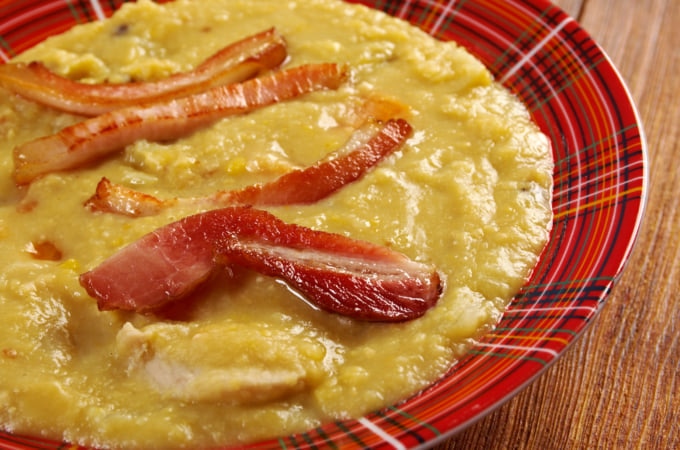
Photo by Fanfo/Shutterstock
Artsoppa is a thick, satisfying soup made from dried yellow peas, onion and a bit of ham or bacon. The dish was traditionally served on Thursdays as a way to prepare for the Friday Fast, a Christian custom of abstaining from meat on Fridays, and while around half the population of Sweden does not identify as religious, many still uphold the custom. A meal of artsoppa is typically accompanied by knackebrod (thin and crispy rye bread) and Swedish mustard, followed with pannkakkor (pancakes or crepes) and cream for dessert.
Surstromming
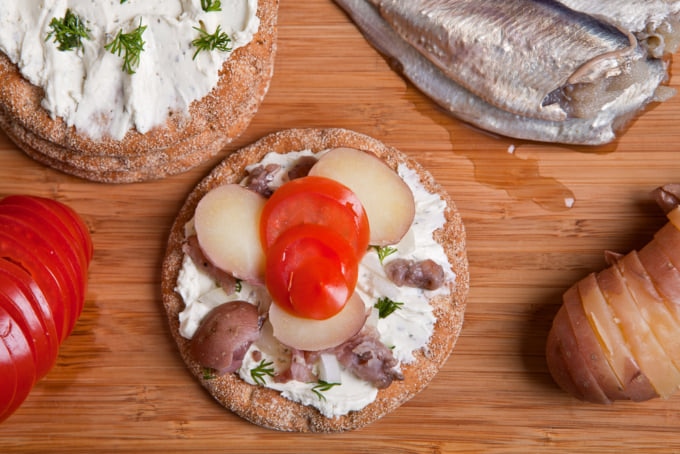
Photo by Marina Khlybova/Shutterstock
Surstromming or fermented herring is a classic Swedish food. The dish uses very small herrings caught in the Baltic Sea, which is salted and left to ferment before and after canning, causing the signature swelling of the can as the gases inside expand. The fish becomes acidic and sour, a reaction caused by the lactic acid found naturally in the spine. Surstromming has a powerful, pungeant odor which is off-putting to most, but like many fermented foods, is very healthy and still widely enjoyed in Sweden, especially during late summer. As the fish is usually canned whole, it often needs to be gutted before slapping it onto some buttered flatbread with onions, pickles and potatoes and eating immediately, before your nose gives in.
In Conclusion
From the unique rotted mackerel of late summer to the versatile lingonberry jam, the cuisine of Sweden is both diverse and delicious. These top seven traditional Swedish foods provide an introduction to the history, culture and climate of this chilly Scandinavian region, and are highly recommended during a trip there.





